The normal water pressure for a home pipe system is between 40 and 80 PSI. But for commercial properties, it ranges from 100 to 110 PSI. So, when the pressure does not fall within this range, you can experience various issues.
So then, how do you detect and fix water pressure issues? First, you can detect water pressure issues by observing the water flow, checking the flow rate, and testing the water pressure. And to fix these water pressure problems, simply flush the water lines, repair any leaks, and replace the water pressure regulator.
But what really causes water pressure issues in the first place? In this guide, we will take an in-depth look at the causes and how to fix low or high-water pressure.
What Causes Water Pressure Problems?
Sometimes, the water pressure in your house may become too low or high hence the water pressure issues. This is usually caused by the following:
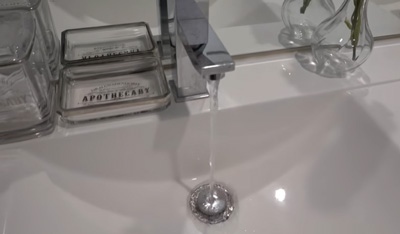
1. Clogs and Blockages
Dirt, mineral buildup, corrosion, and debris can clog and block the pipes over time. These clogs usually restrict the water’s flow rate, leading to low water pressure problems.
2. Malfunctioning Pressure Regulator
Also known as a pressure-reducing valve (PRV), a water pressure regulator controls the water pressure in your property. This is because water coming from the water line into your home is usually at high pressure. So, if the regulator becomes faulty, it could result in low or high-water pressure problems.
3. Water Valve Problems
Every house has two main shut-off valves that control water flow, ensuring the right amount of water enters the plumbing system. Some properties may also have water meter valves. If any of these valves are partially closed, you can experience low water pressure problems.
4. Leaking Pipes
When the pipes are leaking, the water supply will be diverted from the plumbing fixture. This causes reduced water pressure at faucets and other fixtures.
5. Faulty Fixtures
If the water pressure problems are only in one specific faucet, the cause could be a clogged water aerator. An aerator helps reduce the amount of water that comes out of the kitchen and bathroom faucets. If the attachment is clogged, you can experience low water pressure.
How to Detect Water Pressure Issues:
High or low water pressure problems are pretty easy to detect once you know the potential causes. Here are some steps you can take to detect the issues.
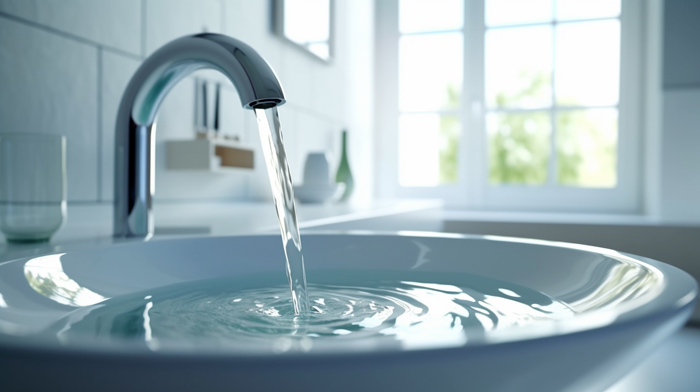
Observe the Water Flow
Run the hot and cold water in all faucets and showers as you observe the water flow. If you notice a significant reduction or increase in water flow, you could be having water pressure problems.
Generally, if you detect signs of low water pressure when running the hot water, the problem could be your water heater’s shut-off valve. The valve could be partially closed.
Check the Flow Rate
Changes in water pressure can affect the water flow rate. Below is how to measure the water flow rate to help you detect water pressure problems.
- Step 1: Get a one-gallon container and a stopwatch.
- Step 2: Turn off all the faucets.
- Step 3: Place your container under one of the faucets.
- Step 4: Then, turn the faucet on and start your stopwatch immediately.
- Step 5: Stop the stopwatch once the container is filled with water.
- Step 6: Divide 60 by the number of seconds it took to fill the container to get gallons per minute.
Generally, the ideal flow rate of a kitchen faucet should be around 2 to 3 gallons per minute and 1.5 to 3 GPM for showers. So, if you get a reduced flow rate, this is a sign of low water pressure and vice versa.
Listen for Banging Sounds
When the water is flowing at high pressure through the plumbing system, it may bounce off the sides of the pipes. This happens because it does not have adequate room to move. Consequently, you may hear the pipes banging, rattling, or shuddering.
Test the Water Pressure
Another way to detect water pressure problems is by using a water pressure gauge. To use the gauge:
- Step 1: Turn off all the faucets in and outside your home.
- Step 2: Attach the pressure gauge to the spigot next to the main water supply pipe and turn it on.
- Step 3: Check the gauge reading. If it’s not between 40 and 80 psi, you have water pressure issues.
Watch this video to understand better how to test your home water pressure:
Check for Leaks
Inspect your home for signs of water leaks, such as pooling water, water stains, and damp spots on the walls. You can check for leaks near water fixtures in your property and in the basement.
Expensive Water Bills
Monitor your water usage patterns. If you notice an unexpected increase in your water bills, you could be experiencing high water pressure issues. High bills could also be due to low water pressure problems due to leakage.
How to Fix Water Pressure Problems:
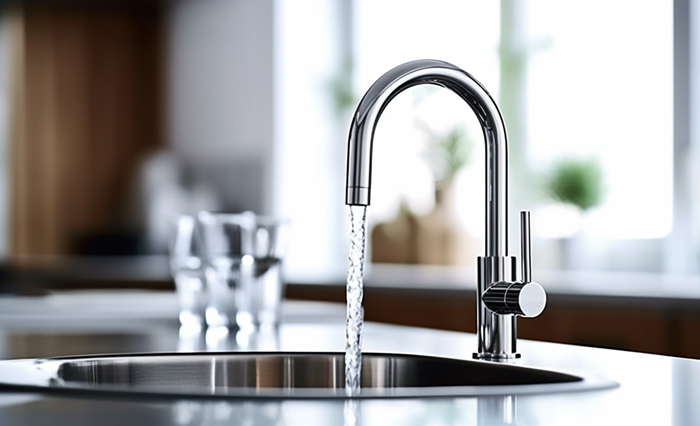
Once you have detected water pressure issues, how do you fix them? Below are the possible solutions based on the specific cause of the issues.
Flush The Water Lines
If the water pressure issues are due to clogs in the water pipes, you can clear the blockage by flushing the water lines. Here is how to do it:
- Step 1: Turn off the shut-off valves under your kitchen or bathroom sink depending on the fixture with low water pressure.
- Step 2: Turn on the hot and cold faucets to release any remaining water in the lines. Then, turn them off.
- Step 3: Disconnect the water lines from the underside of the faucet using a wrench.
- Step 4: Open up the valves and allow water to flow into a bucket for around 30 seconds before closing the valves.
- Step 5: Reattach the water lines and reopen the shut-off valves.
- Step 6: Turn on the faucets and check the water pressure.
- Repair any Leaks
Inspect the water pipes for any visible leaks. Then, turn off your water supply and apply epoxy putty over the hole to stop the leak.
You could also use a repair sleeve consisting of a clamp and a rubber gasket patch. Simply line up the gasket patch around the leaking section of the pipe. Then, secure the gasket to the pipe using the clamp and tighten the bolts.
Adjust or Replace the Water Pressure Regulator
If the water pressure is low, turn the screw on the regulator clockwise to increase the pressure. But if the water pressure is high, turn the screw counterclockwise to loosen it and reduce pressure.
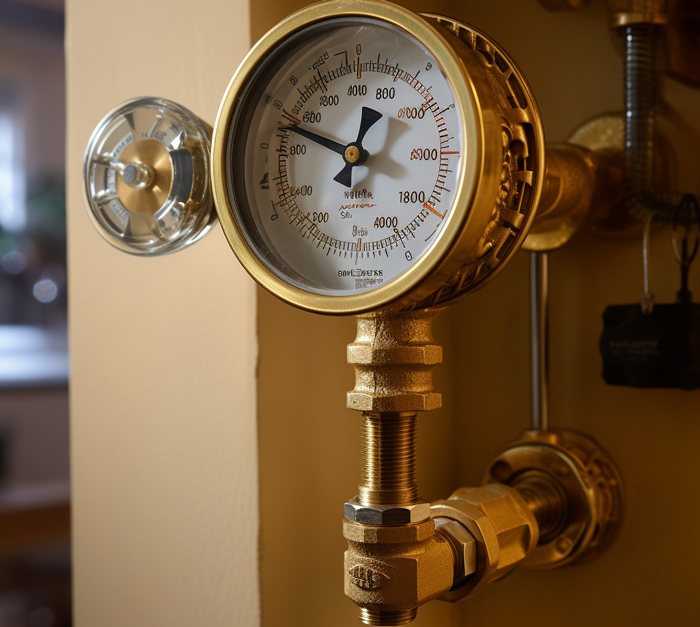
However, if this does not help fix the problem, you must replace the water pressure regulator as it could be faulty. Here is how to do it:
Step 1: Shut off the water supply to your property.
Step 2: Open the faucets to drain any remaining water.
Step 3: Remove the faulty regulator by disconnecting the fittings that connect it to the water supply line.
Step 4: Install the new regulator and use Teflon tape around the threads for a secure connection.
Step 5: Adjust the pressure regulator to the correct levels. Then, turn back your water supply and use a pressure gauge to test the water’s pressure.
Check All the Valves
Another solution would be to check if any of the shut-off valves are fully opened. Turn the valves off and then on. Also, ensure the water meter valve is open completely.
Replace Corroded Pipes
Old homes with steel pipes may suffer from water pressure issues due to corrosion. In this case, the best solution would be to replace the metal pipes with new plastic (PVC) or copper pipes. Unlike metal, plastic and copper pipes don’t rust or corrode.
How to Detect and Fix Water Pressure Issues in Toilet
One way to detect water problems in toilets is to check the water level in the tank. If the level is not at least one inch below the tube or fill valve inside the tank, you should adjust the ball float. You can adjust the ball float by turning the screw above the fill valve to increase water pressure.
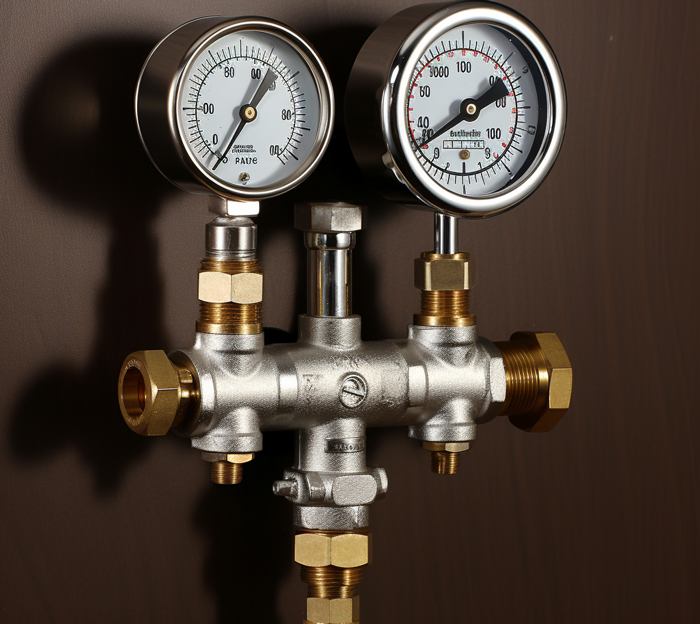
Additionally, inspect the fill valve and flush valve attached to the toilet for any visible leaks, blockages, or damage A fill valve is a narrow tube that refills the tank. Conversely, a flush valve is the opening at the bottom of the tank.
If the tube has a blockage, unscrew it from the toilet and use a wire brush to remove the clogs. However, if the flush and fill valves have leaks or are worn out, you simply replace the parts.
How to Detect and Fix Water Pressure Issues in Bathroom
If the water pressure problem only affects the bathroom fixtures, you check the aerator for blockage. Simply, use pliers to disconnect the aerator from the faucet and clean it. But if it is worn out, replace the attachment.
Next, prepare a paste of water and baking soda. Then, apply it to the bathroom’s shower head. You only add a few drops of water to a 1/3 cup of baking soda. After that, let the paste sit there for at least 30 minutes before scrubbing it using a wet toothbrush. Turn on the shower to rinse the showerhead.
FAQs
Below are answers to some commonly asked queries regarding how to detect water pressure issues in your property.
Appliances like dishwashers may not operate efficiently due to low water pressure. Conversely, high water pressure may lead to plumbing issues, high water bills, and a shorter lifespan of your plumbing fixtures.
No. However, through regular maintenance of your plumbing system, you can minimize the occurrence of these issues. This includes inspecting the pipes, valves, and fixtures regularly for damage or leaks.
Yes, especially when the water pressure problems are in more than one place around the house. Also, if there is a leak and you cannot spot it, you should hire a plumber.
Final Thoughts
Once you know the causes of water pressure issues, it is easier to detect and fix them. Typically, water pressure problems may occur due to clogged pipes, faulty water pressure regulators, leaks, or clogged aerators. So, to detect these issues, look out for signs of leaking or clogged pipes or test the water pressure and flow rate.
Regarding fixing these water pressure issues, you can flush the water lines, repair the leaks, or replace the pressure regulator. However, when it comes to detecting and fixing the pressure issues in the toilet, you may need to replace the fill or flush valve. And as for pressure problems in the bathroom, you clean the aerator and showerhead.